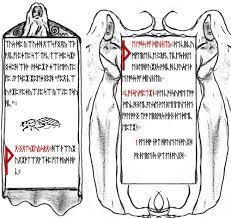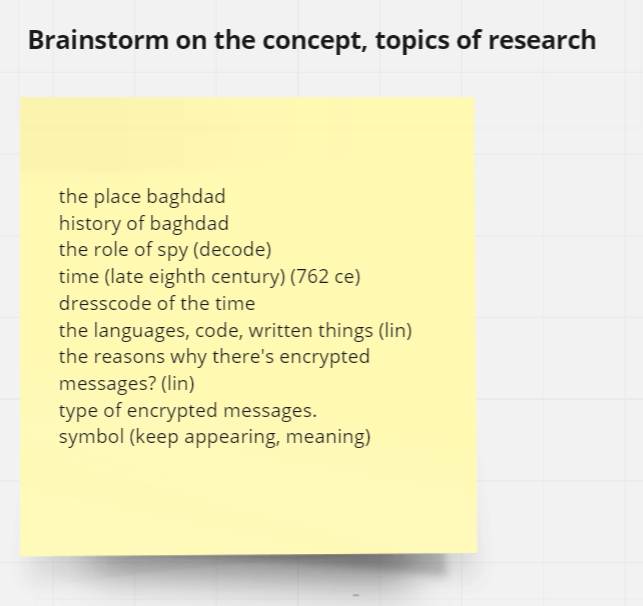INTRODUCTION TO CREATIVE WRITING - CREATIVE JOURNAL
INTRODUCTION TO CREATIVE WRITING - CREATIVE JOURNAL
29TH AUG - TBA (WEEK 1 - WEEK 14)
NG VEYHAN (0349223) / BACHELORS OF DESIGN (HONS) IN CREATIVE MEDIA
INTRODUCTION TO CREATIVE WRITING
ASSIGNMENTS DOCUMENTATION
Instructions
Process
TASK 1:
As the first project was focused on writing a story with narrative drive/characters/settings, I decided to write one that was close to the materials that I have read in the past.
The majority of literature that I have consumed mostly comes from the military fiction genre, from authors like Tom Clancy and Andy Mcnab. Whilst these novels fall under the umbrella of military fiction, it can also be categorized into subgenres from action combat to political thrillers.
(Fig 01, Partial Book Collection)
One of the key takeaways that I remembered from the differences between these two styles of books were their sense of pacing within action sequences. Young adult novels tend to be written overall in a very "approachable" manner, with use of simpler vocabulary, and action sequences progress quickly with less detailed descriptions. This fast-paced writing style does give the work a more dynamic flow, with each movement feeling fast as the reader tries to keep pace with the changing circumstances.
Military fictions authors, on the other hand, write with a slow and collected style even in these action sequences. There is strong imagery in the language that it is presented with and it almost seems to reflect the state of mind of a trained soldier (which most of these novels are centered around), remaining calm and taking in the surroundings whilst in danger. Perhaps as a homage to realism or just to sell the atmosphere, much military lingo is also incorporated into the writing style, making it a little difficult to get into for first time readers.
Going into this assignment, I wanted to write a story centered around a conflict setting similar to those I've read.
(Fig 02, Early Mind Map for TASK 1)
I started off with the mind map structuring my story. I wanted to touch upon a story structure that was present in non-western authors, which I found originating in Japanese mecha anime. Most of the time in these animes, the machines piloted by the characters only serve as a tool for advancing or representing a characters arc, rather being the central focus of the plot, which I noticed tends to be the case for western media with a "mecha" element to it.
TASK 2:
For this scriptwriting assignment, one requirement jumped out to me in particular: the "I've never told anyone this, but I'll tell you now...." line. I was interpreting that the line could be used for a number of different effects on the script, whether it be to subvert expectations, or reinforcing a certain trait of the character.
In my work, I'd go and try to use it to subvert the expectations of my audience. While trying to develop an initial theme, initially I wanted to go for a script with a darker tone. One way for a character to mislead the audience is to have an unreliable narrator. (in this case, the main character)
(Fig 03, Initial Mind Map for TASK 2)
The first idea of having a supernatural entity with an unstable state of mind seemed interesting, as most ghosts or spirits depicted in media often have clear cut goals for their revenge plots. (i.e. the death of a specific person or scaring people away from a certain place) Therefore having a ghost that thinks it knows who to go after, but doesn't really, was an idea that I wanted to develop.
However, after some consideration, I felt that it was difficult to develop a complex enough set of emotions to give the character enough sympathy and drive for it to be compelling to the audience. Going in another direction, I wanted to go for a more light-hearted approach and theme for the script.
Thinking of characters that tend to have a cut and dry formula, movies that feature secret agents or professional underworld figures often have main characters that are calm, collected and suave. For instance, James Bond, Jason Bourne and John Wick from their respective franchises are portrayed as such. However, parodies of this genre such as Johnny English and Austin Powers were also massively successful for subverting this genre.
(Fig 04, John Wick)
(Fig 05, Austin Powers)
The "hitman" genre was a more recently successful genre due to the proliferation of John Wick in modern culture. As such there weren't as many plotlines developed in media playing with this genre yet. I wanted to pitch a character that wasn't just incompetent, but his occupation would be misleading but have nothing to do with the job at hand.
Referencing the Hong Kong dramas I watched when I was younger, it always seemed that in shows revolving around the criminal underworld there's always someone getting framed for something, which I found quite amusing. That did beg the question: "Could there be someone who wants to get framed for some extra cash?" Thus the idea for the next script was born.
In these existing shows featuring hitmen, they're also always portrayed with a "traditionally masculine" charm, sharply dressed, well-spoken and quiet. This is contrasted by the modern standards of attractiveness on social media, which are informally dressed and a loud personality. Instead of having a character who is almost a superhuman, a top 1% of people, the character I'm writing could just be any normal person doing a very peculiar job of taking the blame for crimes professionally.
For this character, he will introduce himself under the persona of his work. A stoic hitman, he'd lament the difficulties of his occupation, and would deliver the lines in a dark, authoritative tone. But in the big reveal, would show that he was just a normal person with very normal wants and desires in his life, being shackled in a hole too deep for his own good. But instead of being dark and moody, he'd still be a bright person.
TASK 3:
The theme of our teams collection of poems was voted to be "Goth and Gore". The title of the theme does imply that it has a darker undertone to it, and for the poems I would contribute, it would feature themes that would reflect this.
At first I didn't know how to structure the poems around the two aspects of the theme. However one day after class, I came up with the idea that the theme could revolve around the interplay between the two aspects, and how they fed into each other.
(Fig 06, Correlations between Goth and Gore)\
Scrawling a quick mind map, I brainstormed a few topics that revolved around the Goth (beliefs in the otherworldly) and Gore (violence). As it turns out, there are quite of similarities and connections when it comes to how these two concepts interact with each other.
The poems would also feature a narrative sequence, detailing the rise of humans belief in concepts of the supernatural and its effects on our behaviour. Therefore, I sequenced the topic as follows:
- How people start believing in the supernatural.
- How people fear what they don't understand.
- People's capacity for both kindness/cruelty.
- How quickly people are willing to sacrifice others for believed gain.
- How differences in beliefs can cause conflicts as big as wars.
- A hypothetical solution to break out this cycle.
(Fig 07, Sequence of Topics under Theme)
For the poem itself, I didn't have many references within my own experiences, as I have never really been into poetry. However for the theme itself, I wanted to give the poems a dark and mysterious, almost foreboding tone. In this respect, one of the most disturbing pieces of "literature" I've seen was the Liber Primus, a mysterious e-book written by an anonymous author only going by the handle Cicada3301.
(Fig 08, Pages from Liber Primus)
The book was written in cryptic runes with a cipher which revealed supposed gibberish. Spouting messages of the human condition behind a veil of a religion, which I believed was relevant to my writings, as supernatural beliefs and religion are two sides of the same coin. What contributed to its sense of unease is its actual use as a puzzle for cryptographers. With a breadcrumb trail hidden behind obscure features of its pages such as its digital signatures and page resolutions, the hidden purpose and potential unknowns lurking within its pages was unsettling to me. Combined with the amateurish illustrations framing the content, it compounded the sense of being a one-of-a-kind cursed book.
Beginning on writing the poems of my own, I decided to go with the darker side of religion as one of the topics. In ages past, organized human sacrifice used to be perform as an offering to gods or other beings to bring fortune or prevent disaster. This poem would describe how people were willing to perform such acts for no actually verifiable benefits. Being a visual poem, one of the key icons of religion would be a cross for Christianity. With its easily recognizable silhouette, I felt it was a good fit for the poem.
Another poem I did was a haiku describing war caused by differing beliefs. One of the aspects of war that jump out to me was that both sides of a war suffer the same, and that each side often thinks they are in the right. In the haiku, it was focused on the scenery of a battle, and that both sides that are striking or struck down, are people too. Three lines of the haiku describe the blood that smells like iron, and the blades clashing and sending sparks that smell of iron, which are the same on both sides.
End of Semester Reflection
Experience: Writing literary material was not something I have experienced in my past years as a student of The Design School at Taylor's. This knowledge was helpful in the sense that if I were to pursue an occupation within the media industry, having an understanding on what makes a proper narrative for different mediums could help myself deliver a product that is even more well-tailored to its use. Perhaps this could help me lay the foundations for a scriptwriting or storyboarding role within the industry, which is quite possible.
Observations: The best written stories always have layers upon layers of nuances. The motivations of a character can overlap and keep developing as a story continues. Such developments could also influence the ones that come after, creating an intricate web which form a complex and compelling personality for a character. The prowess of such authors lie within their ability to maintain this tree of events and not lose track, keeping the core of the character intact while changing them as the story requires. For shorter material such as poems, it is much more expressive than I had anticipated, reflecting the styles and creativity of the individual author and telling a story (or lack of one) with it.
Findings: What I realized was the more difficult part of this writing module was being unable to write a shorter story, or using less flowery language. As it was something I was used to from exams and such from a young age, it was something that I come to see is not necessarily the best option in certain cases. This was apparent in Task 1, where I've found it difficult to keep within the word limit as I progressed. I've come to appreciate authors that can write a very compelling story using nothing but very mundane language, as it proves the authors capacity to write an engaging story without relying on language as a crutch.











Comments
Post a Comment